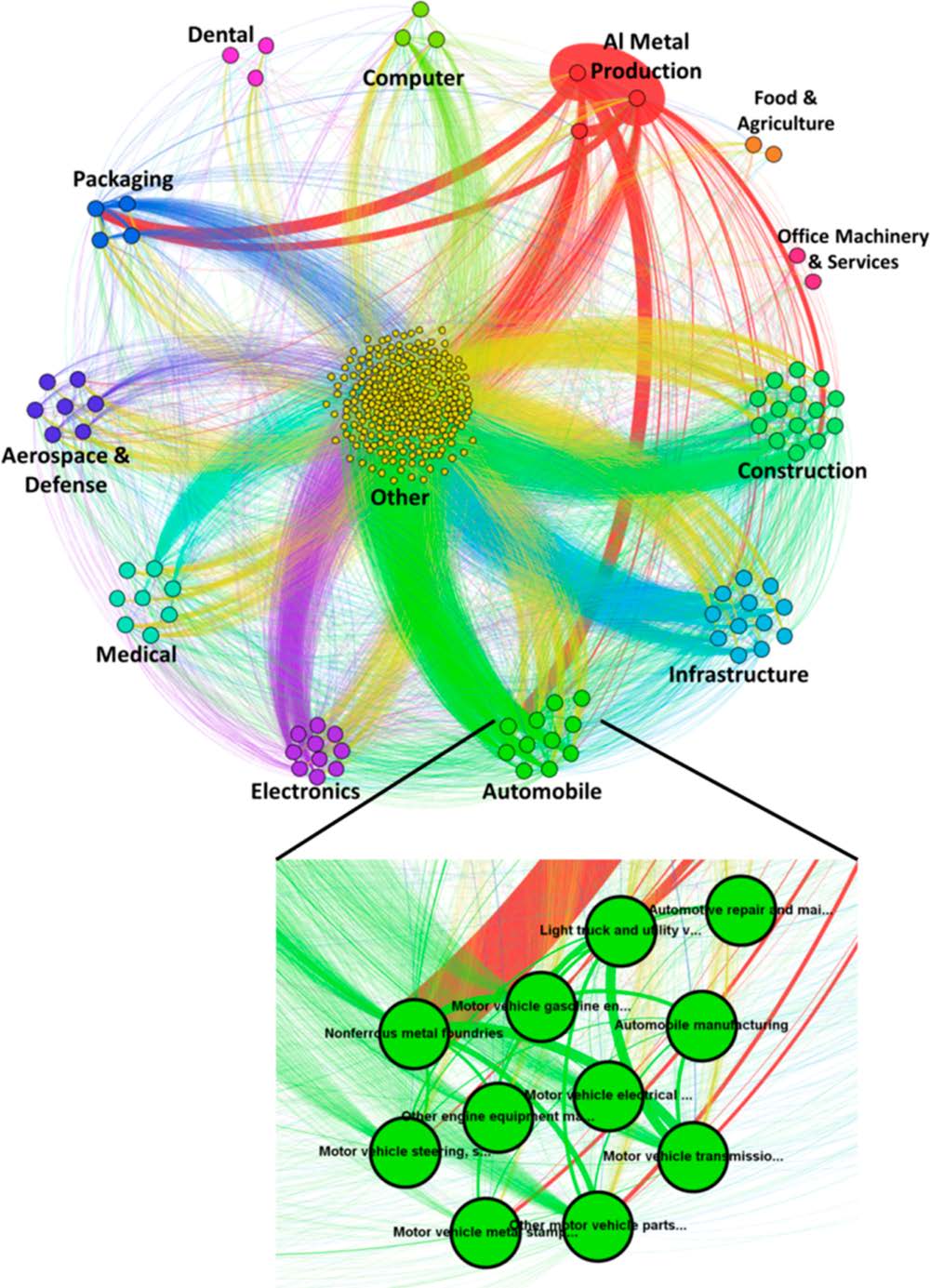Nuss, Philip*; Chen, Wei-Qiang*; Ohno, Hajime; Graedel, T. E.
Environmental Science & Technology 2016 50 (7), 4091–4101. DOI: 10.1021/acs.est.5b05094
Abstract
Metals are used in numerous products and are sourced via increasingly global and complex supply chains. Monetary input–output tables (MIOT) and network analysis can be applied to intersectoral supply chains and used to analyze structural aspects. We first provide a concise review of the literature related to network analysis applied to MIOTs. On the basis of a physical input–output table (PIOT) table of aluminum in the United States economy in 2007, we identify key sectors and discuss the overall topology of the aluminum network using tools of network analysis. Sectors highly dependent on metal product inputs or sales are identified using weighted degree centrality and their hierarchical organization is explored via clustering. Betweenness centrality and random walk centrality (page rank) are explored as means to identify network bottlenecks and relative sector importance. Aluminum, even though dominated by uses in the automobile, beverage and containers, and construction industries, finds application in a wide range of sectors. Motor vehicle parts manufacturing relies on a large number of upstream and downstream suppliers to function. We conclude by analyzing structural aspects of a subnetwork for automobile manufacturing and discuss how the use of network analysis relates to current criticality analyses of metal and mineral resources.
Industry clusters of the aluminum network determined using the clustering method of Kagawa and colleagues.
